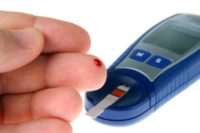EPA urges homeowners to act during National Radon Month
21,000 Americans die from radon related lung cancer each year

 The U.S. Environmental Protection Agency (EPA) is encouraging Americans this month, as part of National Radon Action Month, to take simple and affordable steps to test their homes for harmful levels of radon gas. Radon, a colorless odorless gas, is the leading cause of lung cancer among non-smokers. Radon can seep into a home from underground and if left to accumulate, high levels of radon can cause lung cancer. Improving indoor air quality by increasing awareness of environmental health risks, such as radon gas, supports healthier homes and communities.
The U.S. Environmental Protection Agency (EPA) is encouraging Americans this month, as part of National Radon Action Month, to take simple and affordable steps to test their homes for harmful levels of radon gas. Radon, a colorless odorless gas, is the leading cause of lung cancer among non-smokers. Radon can seep into a home from underground and if left to accumulate, high levels of radon can cause lung cancer. Improving indoor air quality by increasing awareness of environmental health risks, such as radon gas, supports healthier homes and communities.
“Testing for radon is an easy and important step in protecting the health of your family,” said Gina McCarthy, EPA Assistant Administrator for the Office of Air and Radiation. “Radon can be found in every single state. Nationally, elevated radon levels are in as many as one in 15 homes – a statistic that is even higher in some communities.”
Approximately 21,000 people die from radon related lung cancer each year in the United States, yet elevated levels of this health hazard can be prevented through these simple steps:
• Test: EPA and the U.S. Surgeon General recommend that all homes, both with and without basements, be tested for radon. Affordable Do-It-Yourself radon test kits are available at home improvement and hardware stores and online or a qualified radon tester can be hired.
• Fix: EPA recommends taking action to fix radon levels above 4 Picocuries per Liter (pCi/L). Addressing high radon levels often costs the same as other minor home repairs.
• Save a Life: By testing and fixing for elevated levels of radon in your home, you can help prevent lung cancer while creating a healthier home and community.
Radon is a natural, radioactive gas that comes from the breakdown of uranium in soil, rock and water. It can enter homes through cracks in the foundation or other openings such as holes or pipes. In addition to testing for radon, there now are safer and healthier radon-resistant construction techniques that home buyers can discuss with builders to prevent this health hazard.
In 2011, EPA announced the Federal Radon Action Plan, along with General Services Administration and the Departments of Agriculture; Defense; Energy; Health and Human Services; Housing and Urban Development; Interior; and Veterans Affairs. The plan focuses on radon risk reduction, addresses finance and incentive issues to drive testing and mitigation, and builds demand for services from industry professionals.
More information is available at: www.epa.gov/radon or by calling 1-800-SOS-RADON
More information on the Federal Radon Action Plan is at: www.epa.gov/radon/action_plan.html
Looking for a reprint of this article?
From high-res PDFs to custom plaques, order your copy today!







